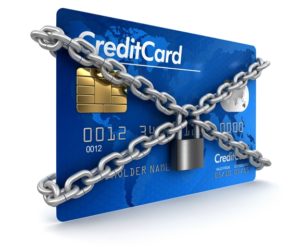 By Ronald W. Rogé, MS, CFP®
By Ronald W. Rogé, MS, CFP®
Chairman & CEO
Technology has certainly opened a whole new world of possibilities. Cars are driving themselves, we can video chat with friends and family across continents, and information is literally at our fingertips. Unfortunately, there’s always a catch. With all the amazing new pieces of technology comes some vulnerability. Ultimately there are people who take advantage of the vulnerability in the form of identity theft.
Although data breaches are not new, the most recent one was publicly released on September 7, 2017 conveying that hackers broke into the Equifax database in May, and stole personal information from nearly 143 million people. If you have credit, there’s a chance that identity thieves could have your Social Security number and address. However, you are not powerless. Here are six steps you can take to help contain the potential damage.
- Check Your Credit Report
Under federal law you’re allowed to request a free copy of your credit report once per year from each of the three credit reporting agencies: Equifax, Experian and TransUnion at https://www.annualcreditreport.com/index.action. You can do this every 122 days by rotating among the three agencies. Once you receive your report, look for any suspicious account activities that you don’t recognize, such as a credit card application or loan that you didn’t request. If you see something, visit www.identitytheft.gov/databreach to find out what steps you can take to correct the issue.
- Monitor Your Statements
Credit reports don’t tell you if money has been stolen from a bank account, or if any suspicious activity has been taking place on your credit cards. Make a habit of checking your statements monthly to keep an eye on your accounts. Many times, theft will start in small increments across multiple accounts, so look out for small amounts being withdrawn or small purchases being made.
- Add a Fraud Alert
You can place a fraud alert on your account for free by contacting any of the three credit agencies mentioned above. The alert will last 90 days, and can be renewed. Placing a fraud alert on your account will warn creditors that you may be an identity theft victim, and they will take extra precautions to ensure anyone seeking credit in your name is really you.
- Freeze Your Credit
In addition to fraud alert, you can also place a credit freeze on your account. This will block anyone – including you – from accessing your credit reports without your permission. You can freeze your credit online through the three credit agencies, and each bureau will provide a unique personal identification number that you can use to “unfreeze” your credit if you ever need to apply for credit cards or loans in the future. Fees to freeze your credit vary by state, but often range from $0 to $15 per bureau. You can sometimes obtain this service for free by having a police report or affidavit stating that you believe you are likely to be a victim of identity theft.
- Credit Monitoring
Many have opted to sign up for a credit monitoring service, which alerts you when your information is being used or requested. Equifax is currently offering a free year of credit monitoring through its TrustedID Premier business, which includes identity theft insurance and will scan the internet for use of your Social Security number. A highly recommended service, and one that my wife Rosanne and I have used for many years is, LifeLock, www.LifeLock.com or 1-800-416-0599. There is an annual cost involved for credit monitoring services. To me it’s worth the peace of mind and the insurance protection for identity theft.
- Opt Out
Identity thieves tend to intercept offers of new credit sent via postal mail. To protect yourself from this, you can choose to opt out of new credit offers being sent via mail either for 5 years by calling 1-888-5-OPT-OUT (1-888-567-8688) or visiting www.optoutprescreen.com, or you can opt out permanently online at www.optoutprescreen.com. To complete your request, you must return a signed Permanent Opt-Out Election form, which will be provided after you initiate your online request.
Although it’s unfortunate that data breaches, identity theft, and scams are becoming common in today’s world, it’s important to take all of the necessary steps to protect yourself. You can also visit the Federal Trade Commission Web site, which offers more information on what you can do to protect your personal information in light of the Equifax breach.



